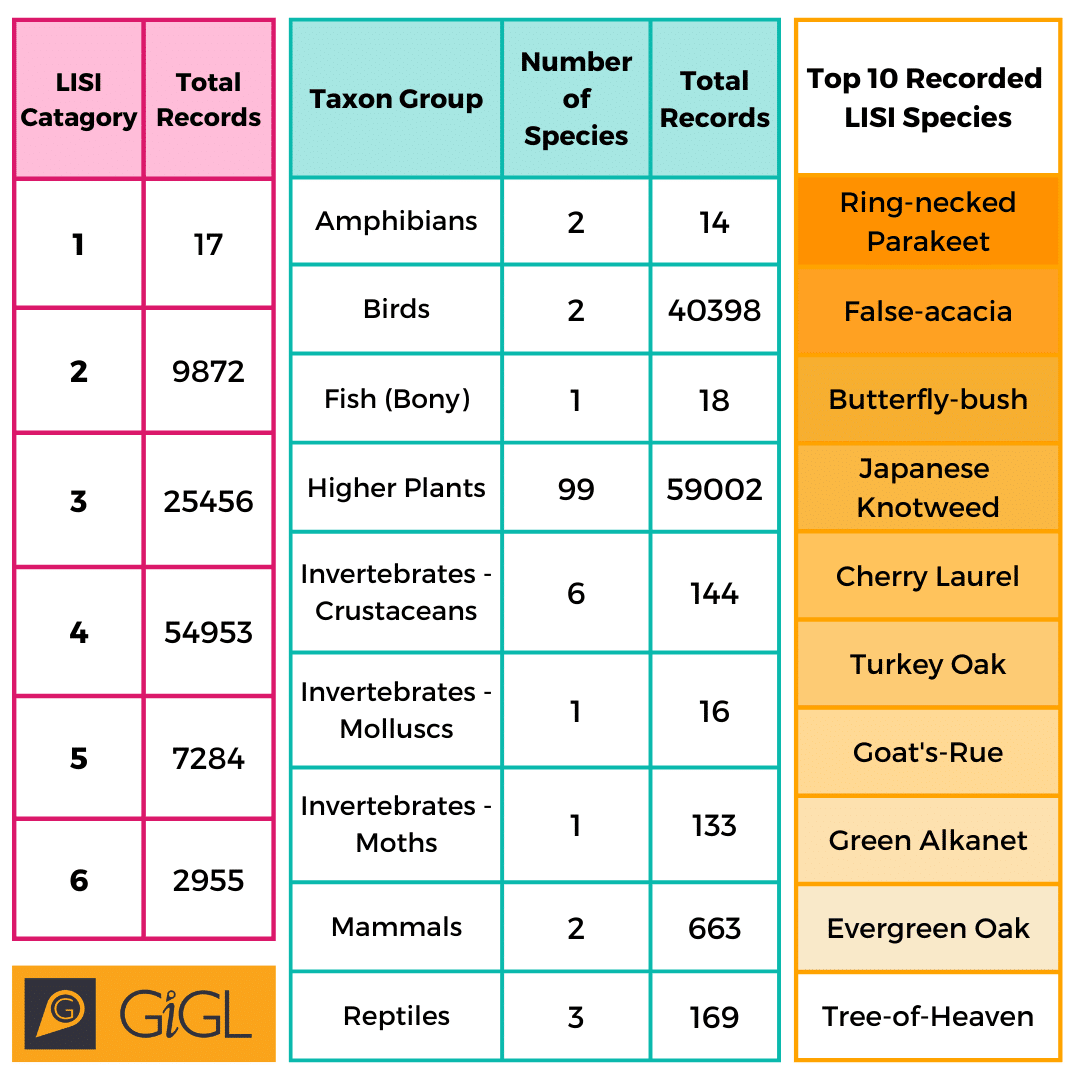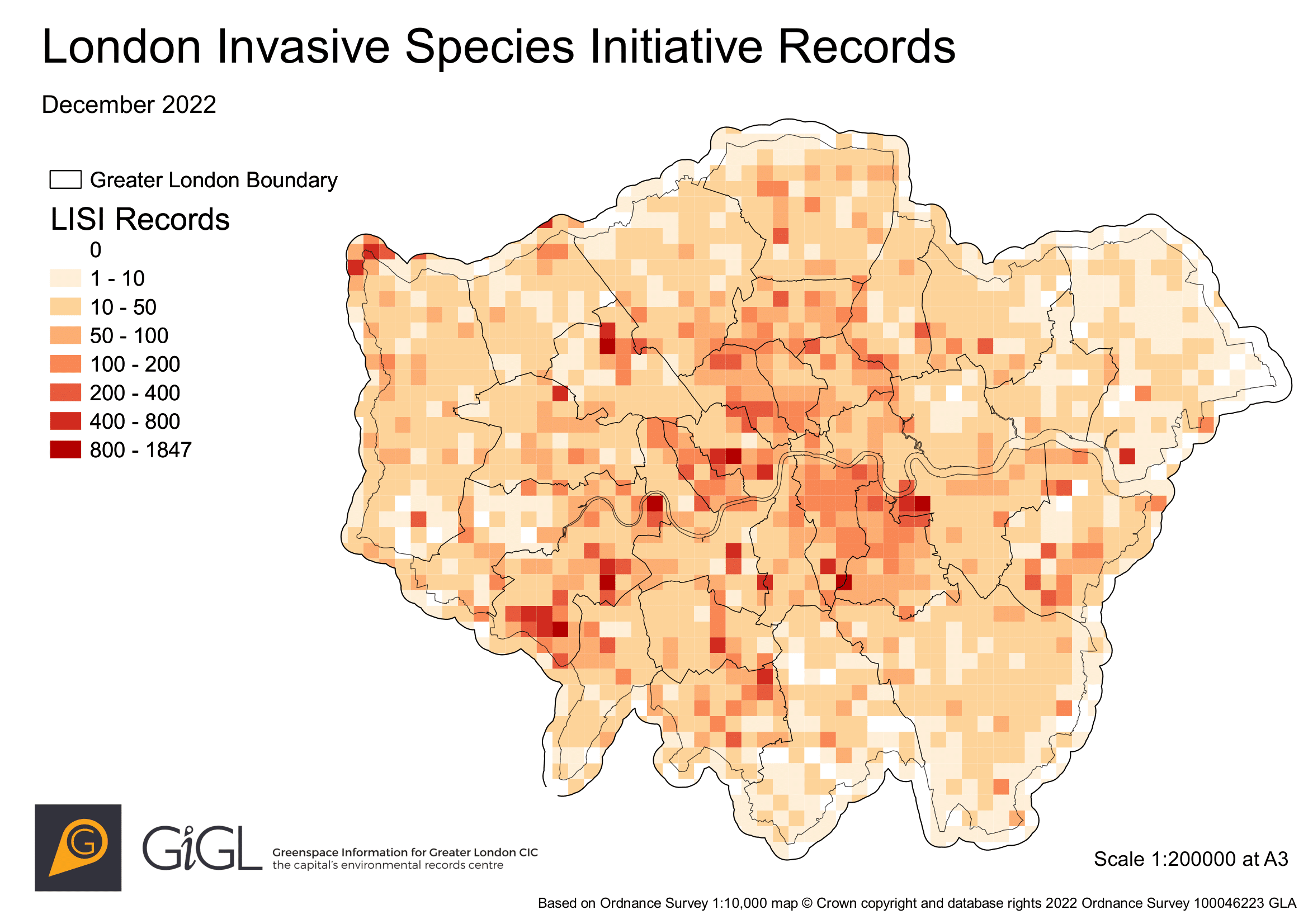Many non-native species do not pose a threat to biodiversity and add to the individuality and richness of London’s wildlife and heritage. However, there are some invasive non-native species (INNS) that are a cause for concern, some of which are threatening the value of London’s natural environment. The highly urbanised nature of London and the anticipated impacts of climate change are likely to exacerbate the effects of INNS.
The London Invasive Species Initiative (LISI) has been created to help address these environmental and economic problems within the Greater London area. LISI brings together organisations from a range of sectors to deliver action to prevent, control, and where feasible eradicate INNS in London. With the experience of relevant professionals, land managers and researchers, LISI have compiled a list of species of concern. This list is specific to the London area and aims to provide direction and a means of prioritisation for land managers by grouping species into different management categories.
To find out more read our recent LISI GiGLer article, which includes a focus on Japanese Knotweed. Please get in touch via enquiries@gigl.org.uk if you would like to discuss anything further.
LISI Records at GiGL
GiGL hosts and is partnered with LISI and acts as a repository for invasive non-native species records. Data on these species are important for London-wide analysis and can provide a broader understanding of INNS. As of 2023 there are currently 107,825 records of LISI species in the GiGL database. These records are highlighted as such in our species lists, reports, and other outputs.
Please send us one-off INNS records using the link below or visit our submit records page to download a recording spreadsheet.

LISI record figures derived from the GiGLspecies
database. Correct as of December 2022.

A heatmap of all records of invasive non-native species
that GiGL hold, as defined by the LISI.
London Invasive Species Plan
The London Invasive Species Plan (LISP) has been created by LISI to provide organisations or persons interested in addressing invasive non-native species with a coherent direction and a coordinated approach. It combines current best practice with knowledge from leading species experts to provide the most appropriate management options available.
The London Invasive Species Plan also links to national strategies and local action. This co-ordinated approach increases the effectiveness and sustainability of our actions and has better cost benefits.
Further Information:
The Non-Native Species Secretariat website hosts the GB strategy and provides further information on INNS, including news and updates, legislation details, and useful resources such as a species Information Portal.
The Great Britain Invasive Non-native Species Strategy sets out the aims and actions for addressing the threats posed by INNS nationally. The strategy covers 2015-2020 and an updated strategy is due to be published by the end of 2022.
A new spontaneous hybrid in Gunnera subgenus Panke (Gunneraceae) widespread in the British Isles, with notes on the typification of G. manicata – recent research suggests that a lot of Gunnera (Giant rhubarb) in the UK is now a hybrid of a Schedule 9 non-native invasive species (G.tinctoria), and another species not on the invasives list (G.manicata).
